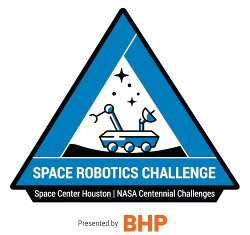Mapping, Planning, and Sample Detection Strategies for Autonomous Exploration
This paper presents algorithmic advances and field trial results for autonomous exploration and proposes a solution to perform simultaneous localization and mapping (SLAM), complete coverage, and object detection without relying on GPS or magnetometer data. We demonstrate an integrated approach to the exploration problem, and we make specific contributions in terms of mapping, planning, and sample detection strategies that run in real-time on our custom platform. Field tests demonstrate reliable performance for each of these three main components of the system individually, and high-fidelity simulation based on recorded data playback demonstrates the viability of the complete solution as applied to the 2013 NASA Sample Return Robot Challenge.It is the Journal of Field Robotics in the Wiley Online Library. I could, and probably will, spend a lot of time with the back issues in the Journal.
I was blown away by the paper. Calling it a paper is misleading. It is 32 pages of details on mapping, planning and vision processing. In all my web searches I have not found anything that compares to the material. It is intensive and extensive.
Can you tell I liked it? It is just incredible. Reading it boosted my own ego for attempting the competition. Every one who competes in the SRR should give themselves a big smile of congratulations the next time they are in front of a mirror.
This work is not just abstract. It provided tangible results during the competition.
They were the first team to successfully collect the Phase 1 pre-cached sample and return it to the starting platform. This was in the second Phase 1 day of the 2013 SRR. The only thing the missed was stopping in time. The sample was just a little beyond the rear of the platform so it did not qualify. (Fortunately, in one sense, they are a demonstration team since they are Canadian. It would have been heartbreaking to miss by, in "honour" of Canada, centimeters and not collect the $5000 from NASA.) It is kind of amusing that for all the work reported in the paper they did not report on how the robot determined when to stop.
The robot was guided by a suitcase on the Home Beacon. The suitcase was a clever idea since it added no additional weight to the transportation and they were going to have a number of them available. If the suitcase were positioned just a few centimeters closer to the platform the sample would have been properly positioned.
Excellent work all-around by Team Waterloo.



No comments:
Post a Comment